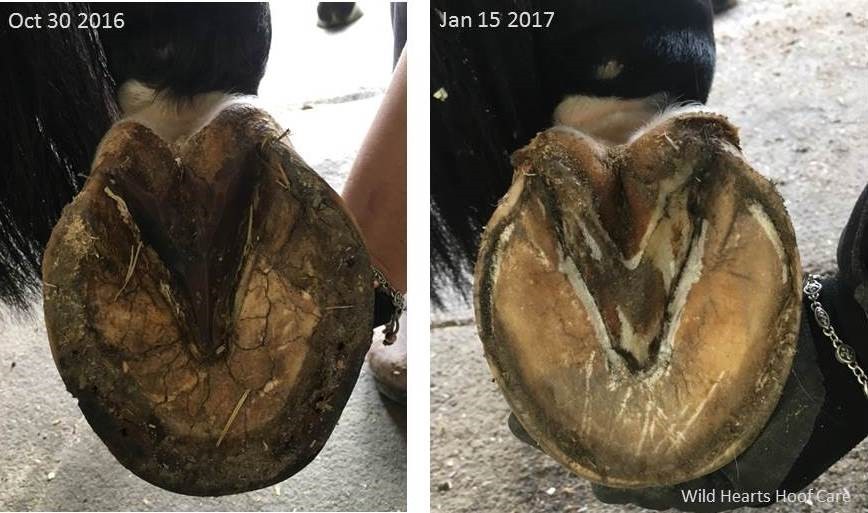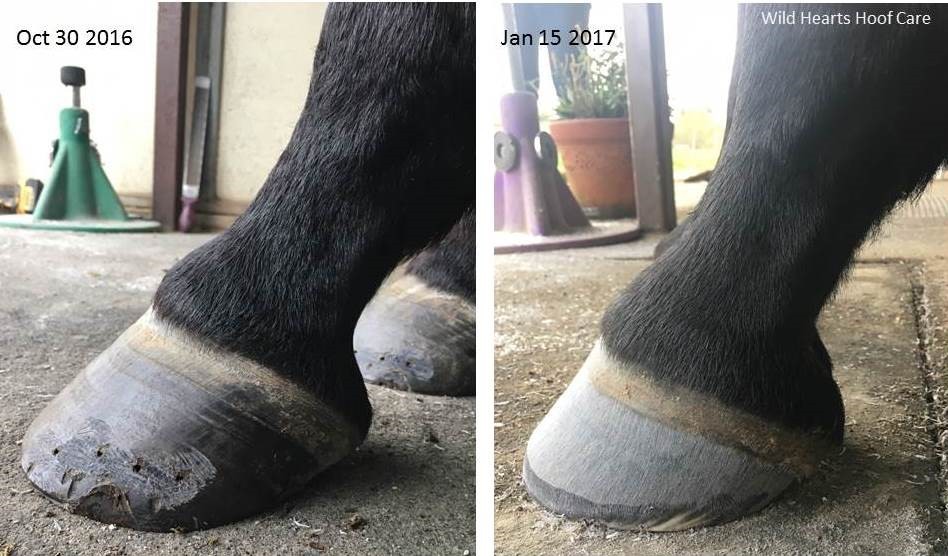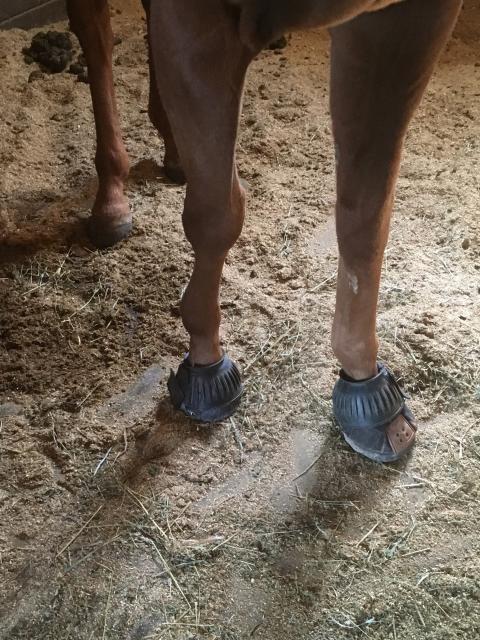Submitted by Sossity Gargiulo, Wild Hearts Hoof Care
I was recently asked by EasyCare to write up a few words about our trimming theory and approach. This always ends up being quite difficult to be succinct with, as there are so many ways depending on the horse. But, at our foundation we believe that the hoof is a highly adaptable “smart structure” as said by Dr. Taylor of Auburn University. The hoof is capable of positive change given the opportunity with supportive trims, diet and lifestyle. We have seen it over and over and over again in our hoof care practice.

This left front hoof made the visual changes above, as well as an internal coffin bone angle change from negative to positive angles (-2.45 degrees to positive 3.25 degrees) in 6 months.
We have found that if you help the hoof a little bit with your trim, by setting it up to grow better between cycles, making sure the horse is comfortable to move properly with minimal or no compensative movement, and then get out of their way, they can develop a pretty awesome hoof. It may not be the picture in some people’s mind of The Perfect Hoof, but it can be a pretty awesome, functional, sound and improving hoof for that horse.
This right hind hoof made a positive change (literally) to the angle of his coffin bone, which we can see by observing the angle of the hoof wall and the hairline. In the October image, the hairline is much steeper, the heel is lower and forward and the dorsal wall is bulging in a bull nosed shape. By January, his hairline is more shallow and relaxed down, the heel is in a more supportive position under the bulbs and his dorsal wall is straight. (Please note that this was not straightened with the hoof buffer, which we used to only very lightly scuff the walls.)

The yellow and green line overlays were copied and pasted unchanged from each of the images to show the shape changes that took place over 11 weeks.
The owner may have to make some changes for the horse’s sake, and in fact, it is pretty much guaranteed. Often this involves things like changing the footing in the horse’s pen to be cleaner or more dry, perhaps treating for thrush, changing from sweet feeds to a lower carb vitamin/mineral supplement and almost always learning how and when to use hoof boots.
It also often involves educating owners as to what a healthy hoof looks like. When an owner learns to recognize signs of hoof distortion they can, for the rest of their horse owning life, step in and know when to make necessary changes before things get too out of whack.

You could say that the frog’s change in width, in this right hind hoof, over 11 weeks was simply due to a style change of trimming less from the sides, but how to explain the change in the heel bulb shape? This cannot be cut to shape, the horse makes this change.
We tell our clients that it takes around eight months to one year to grow a whole new hoof. Some horses need to grow two or more hoof cycles to really develop into more like what we like to see, but I think it is important to be aware that the horse, and his feet, are always in motion. They are always growing, and they can be growing for the better every moment. Sometimes we are gifted with quick visual changes, the heels open up, or maybe the wall quality improves right away. But even if we don’t see huge changes externally, we can know that the horse is moving better, perhaps a longer stride, more confident loading their heels. This tells us that internally, things are improving, realigning, developing and strengthening.
Finally, we feel strongly that you need to look holistically at the situation. The horse’s feet may be better aligned with some modifications to their trim, and that is wonderful, but that’s not all. That change then impacts the way he stands and moves, which impacts the angles of his joints and the way he uses his soft tissues. It is a whole horse change.

Left front, 11 weeks between images.
What does your horse have going on that could be improved upon? Could he benefit from a change? How much more could you see from your beloved partner in terms of comfort and performance?
Sossity and Mario of Wild Hearts Hoof Care.





